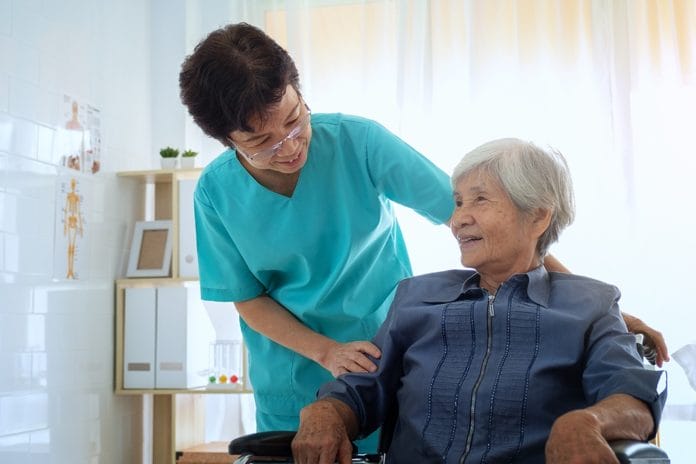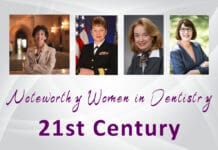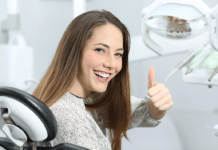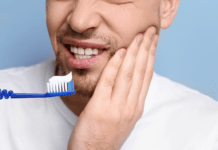Ever think about assisted living patient care? These patients oral health is often overlooked as the staff is incredibly busy meeting daily needs, and often undertrained in the importance of thorough plaque removal. How can we step in and fill the dental needs to these so deserving people? Setting up a program for daily home care is not nearly as difficult as some may imagine. This article explores the steps of creating a program to educate staff in general toothbrushing and basic daily home care in assisted living settings.
The first step is to contact the director of nursing. The simplest way is to call the main number and ask to be connected with the director of nursing. Be prepared to leave a message. For the message, practice a 30-second promotional piece that is attention-grabbing and sincere with zero judgment. Most agencies are aware that oral home care is often low on their priority list and frequently left to the patient to accomplish alone. A return call may not be imminent, but most agencies are excited to get a call offering training and help from a dental professional. Ask in what way you can serve.
Most agencies I have found need both staff training and patient skill development. Agencies carefully monitor dietary needs, so I do not include any instruction on diet directly to patients but do add a component on diet for dental health in all presentations to staff. It has been my experience at every presentation, and I do mean every, that staff attends with pop, energy drinks, sugary coffee beverages, and many carbohydrate-based snacks. To my mind, this is a great opportunity for staff to learn about their own health and offers more of a buy into the new program.
Offer to train staff in daily home care techniques that are quick and simple. This can be done in a multitude of ways. Some agencies prefer one very large group presentation which can be recorded for those unable to attend. Some agencies will want a small attendance, lunch and learn-style presentations. The truth is, as long as you are well-prepared with the information to present, and offer a question and answer portion, you will be awesome.
The most important part is to schedule time appropriately for whatever the agency is requesting. For most presentations, I arrive prepared with a Mountain Dew, empty Starbucks large cup, yogurt container, smartphone, typodont, toothbrushes, floss, and floss picks. As much information as possible needs to be included, so best to work off an outline and prepare to keep your audience on track.
Below is the program outline I have used in several hundred presentations throughout four years of grant-funded outreach:
Explanation of Why We Have Teeth
To eat: Proper nutrition is important to overall health, and proper digestion requires thorough chewing.
To speak: It is nearly impossible to enunciate without a full complement of teeth; try saying “s,” “th,” and “l.” Speaking clearly requires a full set of teeth.
Smile, self-esteem, happiness: Appearance is important to many and smiling shows joy. Self-confidence can be gained when patients feel good about their smile.
Describe dental plaque: “Run your tongue over your teeth, does it feel like glass or does it feel like your teeth are wearing a sweater?” Dental plaque is a soft, sticky, invisible, film of living bacteria (biofilm). Plaque can be removed through thorough brushing and cleaning between the teeth. When plaque/biofilm is left undisturbed, it becomes stronger (virulent). It also hardens (calcifies) into tartar (calculus) which needs to be removed by a professional dental cleaning.
Plaque/biofilm must be removed regularly: Educate on the disease process and signs of disease: gingivitis (reversible) red, puffy and bleeding gums. Periodontitis is when bone is lost and teeth can appear longer, loose, bad breath may be present, bleeding, and possibly pus can be seen. Periodontitis is a serious medical condition of inflammation and infection which can lead to overall decline in health.
Brushing technique: Hand (Manual) or an electric toothbrush is fine, whichever is preferred or used more successfully, soft bristles always, even those with no teeth, (edentulous patients) must be gently brushed to remove bacteria.
Demo BOIT: bumpy (occlusal, or biting surfaces), outside (what you see when smiling), inside (what the tongue touches), clean tongue. Always start upper right to make three complete circles around the mouth, 2-minute minimum.
Technique using electric brush: minimal hand motion, follow BOIT pattern but move hand very slowly, so the bristles remain in contact with the tooth for about 5-10 seconds, let the brush do the work! Place bristles straight up and down for the back of the lower front teeth. Demonstrate how the bristles do not fit when held sideways.
Paste: Any ADA-approved paste or no paste if there is an objection to texture or flavor.
Flossing: Always begin on the upper right and do all top teeth, then do lower left and follow around to lower right, so no teeth are skipped. This makes one complete circle. Explain proper technique, explaining importance of “C” shape. You can demonstrate on a typodont or show a YouTube video.
Always follow the same pattern of BOIT brushing and flossing starting and ending in the same spot so that residents learn to be more comfortable in a predictable method that all staff will use with them, and they can follow along. This patterning creates fewer objections and much more tolerance over time and therefore greater bacteria reduction.
Floss piks/interdental brushes: Demonstrate on typodont the sliding between the teeth several times always beginning in the upper right, completing the top teeth, and then moving to the lower left to complete the lower teeth in one full complete circle.
Sugar and carbohydrates: While we know that your residents have little choice in their diet, it might interest you (staff) to know that the normal bacteria in your mouth thrive on the sugars we eat; once they “eat” they must excrete waste. This waste is acidic, which is damaging to teeth. The bacteria thrive best in acidic environments which can also lead to increased tooth decay or cavities. Explain frequency vs. amount and the need to wait to brush for 20-30 minutes after eating/drinking acidic foods/beverages, though rinsing with water may help dislodge food particles and help lower the acidity.
Discuss this only as it relates to the staff, most residents are on prescribed diets; staff seems to really enjoy this portion. Personally, I start this portion saying “Pop is poison and Gatorade is medicine” which seems to get a lot of conversation going about sugars in the diet, and I further explain that 4 grams of sugar is one teaspoon, so it is easy to do the math on any snacks or beverages brought into the presentation. It is helpful to bring a mountain dew, fruit drink, yogurt, and candy bar to practice with sugar content.
Questions: Leave lots of time, you will be amazed by the number of questions and personal stories shared.
Again, this is the basic outline I have used in several hundred presentations throughout four years of grant-funded outreach. Please use as you wish, adapt to meet your needs, and have great success teaching daily home care skills to staff and patients/residents. It is truly so rewarding to see bright, clean smiles after!
The next article in the series will focus on actual hands-on training for staff to provide daily home care.










